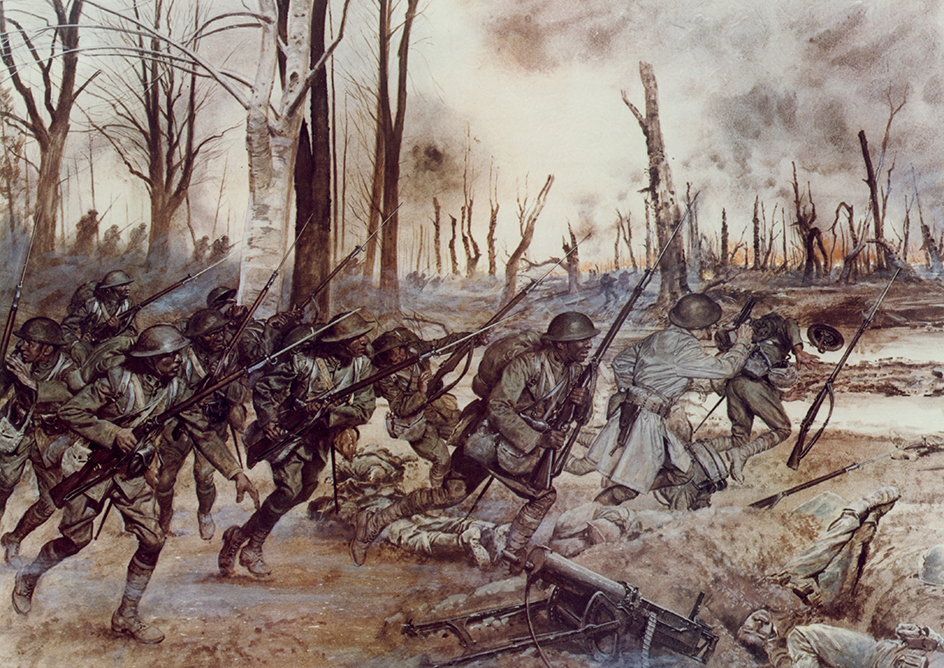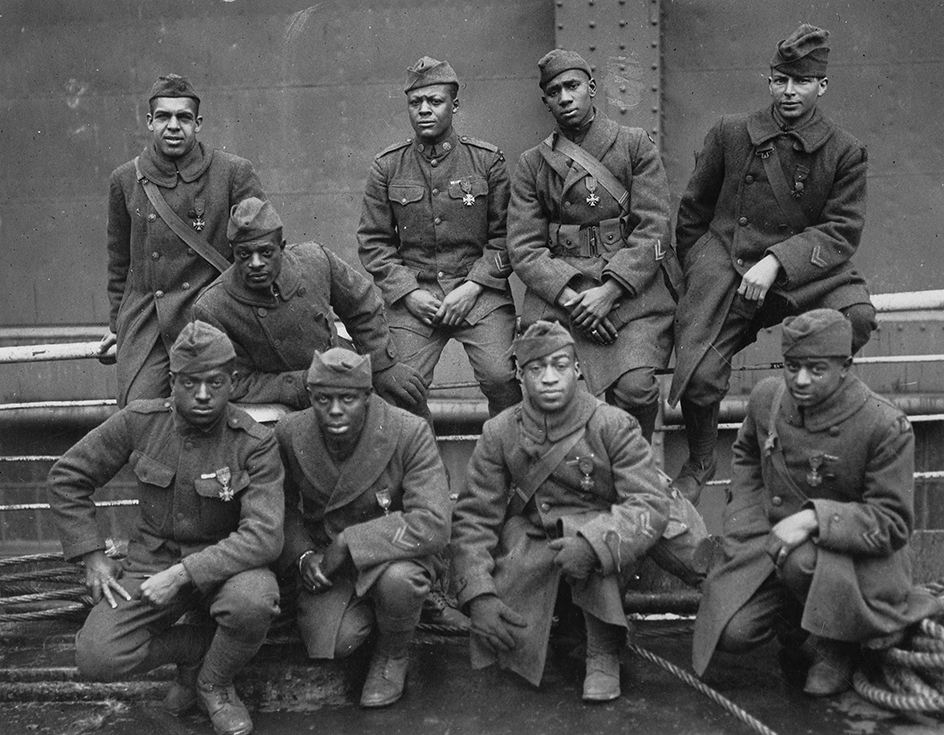Harlem Hellfighters was the nickname given to the 369th Infantry Regiment of the American Expeditionary Forces (A.E.F.) during World War I (1914-1918). The 369th was an African American unit from New York City that had originally formed as the 15th New York National Guard Regiment. In December 1917, the regiment became the first all-black American combat unit shipped overseas during the war. At that time, the United States Army operated under a policy of racial segregation, and most African Americans in the Army served as laborers. With no official combat role within the A.E.F., the 369th was assigned to serve with elements of the French Army. With French weapons and helmets, the 369th entered the front line trenches in April 1918.

In the regiment’s first months of combat, the 369th fought with such ferocity that both its German enemies and its French allies called its members Hellfighters. On Sept. 29, 1918, as part of a massive Allied offensive in northern France, the 369th suffered heavy casualties while capturing the village of Séchault. For this successful assault, the regiment as a whole received the Croix de Guerre (War Cross), a French decoration for bravery.

In 191 days of combat, roughly 1,500 soldiers of the 369th were killed or wounded in action. The soldiers of the regiment received 171 individual decorations for valor. At war’s end, the 369th received the honor of becoming the first unit to cross the Rhine River into Germany. The regimental band, led by the composer and bandleader James Reese Europe, became a sensation in Paris and other parts of France, playing ragtime, jazz, and other music. In February 1919, the 369th returned home and marched in the victory parade through Manhattan to the Harlem section of New York City. Today, a memorial to the heroism and sacrifice of the Harlem Hellfighters stands in Harlem. A similar memorial stands in Séchault, France.
The 369th was part of the all-black 93rd Division (Provisional), which also included the 370th Infantry Regiment, from Illinois, and the 371st and 372nd, recruited from several other states. All four units saw combat on the Western Front, a battlefront that stretched across Belgium and northeastern France. In total, around 400,000 African Americans were in the U.S. military during the war, and about half of these soldiers served in Europe.

The 369th later distinguished itself at the Battle of Okinawa during World War II (1939-1945). The regiment also served in the Korean War (1950-1953) and the Persian Gulf War of 1991. The 369th continues today as a support battalion of the New York Army National Guard. The U.S. armed forces were not fully integrated until 1954.
See also A.E.F. ; Harlem ; Myers, Walter Dean ; World War I .
